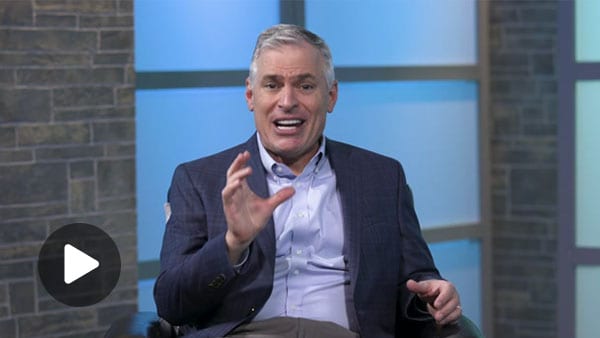
In partnership with the National Christian Foundation (NCF), the Global Leadership Network is presenting a four-part article series to highlight strategic ways to maximize your financial stewardship and increase your joy in giving. In Part 1, we will explore how to create a generosity legacy.
Drew Formsma can still remember his first big experience with generosity. His dad, Brad, brought in the newspaper and shared a story about a refugee family whose bikes had been stolen. “What are we going to do?” his dad asked.
“Us kids decided we wanted to go buy them bikes,” Drew says. So, they went to the bike store, bought some bikes for the family and loaded them in the back of their car. That was when Drew’s mom looked at Drew’s dad and asked, “Where do they live?”
No one had thought about that. They didn’t have an address, and they couldn’t get anyone to give it to them.
Unwilling to give up, the family drove, asked, and waited around for four hours until they finally met the family of Sudanese immigrants whose bikes had been stolen. Drew says the stolen bike had been this father’s only means of transportation—his way to and from work to support his family.
The grateful family hopped on the bikes and started riding around. The dad’s English was limited, but his gratitude was evident. “All he could say was, ‘I like bike. I like bike,’” Drew says.
This one story changed the trajectory of the Formsma’s lives forever. Brad went on to found an organization that promotes generosity and to host a podcast for generous leaders.
A legacy through shared experience
Drew’s dad remembers the first time he recognized the power of generosity too. One Saturday morning, Brad Formsma went for a ride in his grandfather’s truck to deliver some bread, but what Brad experienced that day was far more than food distribution.
At the first stop, his grandpa shared bread and kind words with a widow. The second stop involved bread and a white envelope with money. The third included a letter of referral to help someone get a job. At the fourth place, he delivered bread and visited with a woman who couldn’t leave her home. At the fifth stop, he gave his full attention to a retired employee whose wife was very sick. At the last stop, he shared bread and a tool with someone who needed to use it.
The principles of giving Brad saw lived out that day shaped the course of his life, and in turn, the lives of his wife and his three children, including Drew. Inspired by his great-grandpa’s example, Drew has created an acronym (MEE) to help parents remember how to get their children on board with generosity. MEE stands for:
- Model: “Making your annual donation is fine, but if you really want your son or daughter to have the attitude of generosity, they need to see you putting these principles into action too. And we have more opportunities than we think,” Drew tells parents. “If we just lift our heads up and look around,” says Drew, “there are people around us every day…Every human being we encounter is an opportunity to engage in a life-changing act of generosity.”
- Encourage: Pointing out opportunities to be generous and supporting children in their efforts are two important components in encouraging your children’s generosity. But Drew warns, “Be sure you aren’t forcing them; that will backfire. Help them notice people around them, and point out how they might be able to make a difference.”
- Engage: According to Drew, engaging with your kids and making generosity a family practice is the most important thing you can do. He knows first-hand that it works, because that’s what his dad did. But he says it takes time, patience and transparency. “You won’t get it right every time, and your kids may resist initially. My parents don’t get it right every time, and they have been doing this with us for many years.”
A legacy that can change generations
Drew has some advice for his generation: “What if, instead of being known as tech necks or iGen—the self-absorbed generation that is too attached to our smartphones—we became known as the Generous Generation?” He encourages kids to use technology to reach people but to also “see beyond our screens” and work to reverse selfishness and lack of connection.
What if, instead of being known as tech necks or iGen—the self-absorbed generation that is too attached to our smartphones—we became known as the Generous Generation
Brad and Drew are multiplying this message by speaking at churches and with families across America through a day-long experience they’ve created for families called “Generosity for Generations.” Brad and Drew join family meetings to facilitate and guide conversation among the generations.
“One of the things we’ve learned from wealthy families we serve is that there are amazing stories of grandpa and grandma that have never been told,” Brad says. The Formsma’s help families learn about what is important to each other. “When we learn a little bit about each other…a little bit about ourselves and about God together, something beautiful happens.”
A lot of money is being transferred right now and will be in the next few decades, Brad says. “Families are leaving resources to their kids, and that’s fine. But helping kids understand where you give and why, that’s important.” Kids shouldn’t be expected to replicate their parents’ giving—in the same amounts to the same causes—but they need to know how the generation before them processed and prayed through their giving decisions.
One man, an 87-year-old chairman of a billion-dollar company said, after the Formsmas came in and facilitated conversations with his family, “Today, a story will not be buried, because it was shared. My only wish is we would have started talking about generosity sooner.”
If you want to talk with your family, Brad offers some questions you can answer:
- Who first modeled giving for you?
- Do your kids know where you give and why?
- Do you involve your kids in your giving?
A legacy that heals
Still in his teens, Drew can already see family generosity as a way to heal families. “The biggest threat to teenagers right now is depression, suicide and broken families,” he says. “Generosity brings great joy, and families that give together often stay together.”
The legacy Brad’s grandpa left him is so strong, that after he heard those immigrants saying, “I like bike,” he began work on a series of films called “I Like Giving”—a collection of inspiring stories of generosity that have now been viewed more than 100 million times in more than 170 countries. And, with Brad’s help, Drew has written a book called Everyday Generosity: Becoming a Generous Family in a Selfie World, about how kids and their parents can be generous together.
Brad explains a first-hand experience of this that still motivates him. “One day my grandfather called me into his office and held up a piece of paper. I remember seeing about 20 different organizations, along with a dollar amount of where he gave,” Brad says. “I was 11. It seemed like a lot of money, but I didn’t know how to process that. I wish I still had that list today, because it would reveal my grandpa’s heart, since that’s where he put his treasure.”
What Brad does still have from his grandfather is a letter he wrote him when Brad was 14:
Dear Brad,
Winston Churchill said, “You make a living out of what you get and a life out of what you give.” I think this is well worth remembering.
Love Gramps.
You can learn more about the Formsmas at bradformsma.com. Check out The WOW Factor Podcast: Words Of Wisdom from extraordinary leaders to help you grow in business and beyond, hosted by Brad, wherever you listen to podcasts.
This post originally appeared on the National Christian Foundation website, ncfgiving.com . To learn more about their creative solutions and explore giving strategies, contact Joe Pringle and the Chicago team by visiting their website or reaching out at chicago@ncfgiving.com.















Recent Comments